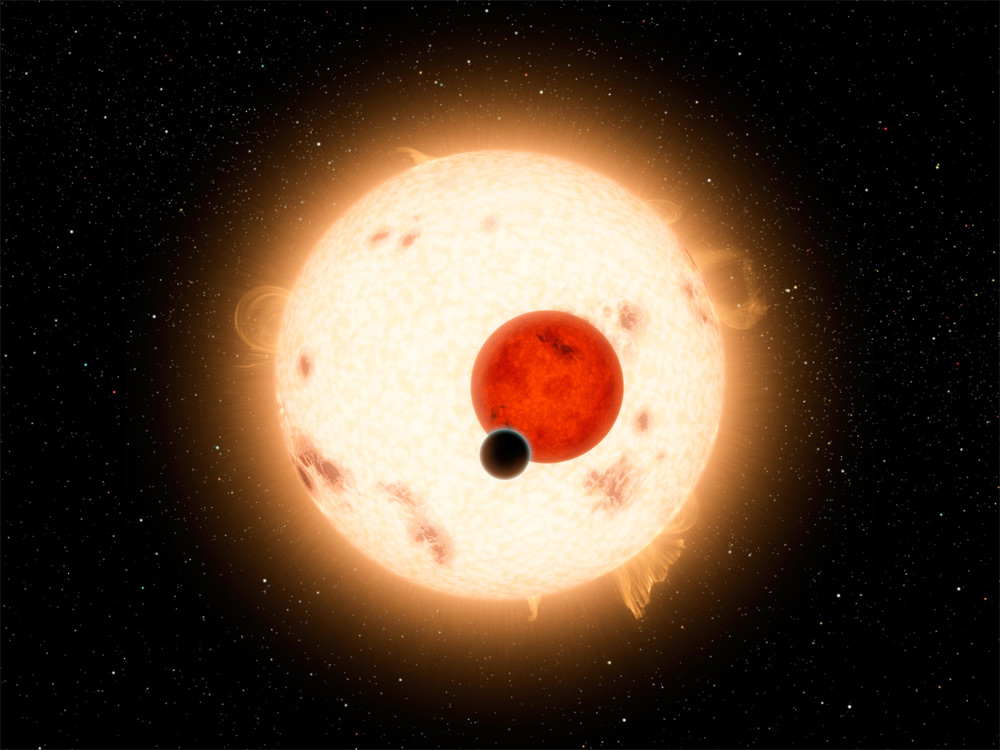Twin-Star Systems May Give Their 'Tatooine' Planets the Boot (Here's Why)

Worlds with twin suns, like Luke Skywalker's fictional home Tatooine in "Star Wars," may be rare because closely paired stars gravitationally hurl planets away from them, a new study finds.
Although Earth may orbit a single star, most sun-like stars are binary systems — two stars orbiting each other as a pair. In fact, there are many three-star systems, even going as high as seven-star systems.
Worlds that orbit around binary stars are known as circumbinary planets. The first real-life alien world with two suns ever discovered by astronomers is Kepler-16b, a gas giant that NASA's Kepler spacecraft found orbiting the star Kepler-16 about 200 light-years from Earth. [Kepler-16b in Pictures: The 1st Twin-Sun Planet Like Tatooine]
So far, Kepler has discovered 11 circumbinary planets. This is a small number, given how common binary systems are and how many confirmed exoplanets Kepler has discovered — more than 2,600, at last count.
To examine this discrepancy, scientists developed computer models of binary systems that possessed a varying number of circumbinary planets with a range of masses. These were isolated binaries, without any nearby stars to complicate the simulations, and orbited each other at distances of less than one-tenth of an astronomical unit (AU), the average distance between Earth and the sun. (Among binaries that host circumbinary worlds, the closest that astronomers have seen the stars get to each other is Kepler-47, whose stars are about 8 percent of an AU apart.)
The researchers found that with young stars in binary systems, the gravitational interactions known as tidal forces that each star exerts on its partner slows the rate at which it spins on its axis. This in turn increases the distance at which they orbit one another.
In addition, each star's magnetic field compels it to blast material off it. This pushing makes the stars then draw nearer to each other.
Get the Space.com Newsletter
Breaking space news, the latest updates on rocket launches, skywatching events and more!
Computer simulations revealed that these changes in the orbits of the stars destabilize the orbits of planets around them. In 87 percent of the simulated binary systems with multiple circumbinary planets, the researchers found that at least one circumbinary planet close to the stars got hurled away from the system.
This mechanism for shedding worlds that the researchers examined "provides a compelling explanation for the lack of observed circumbinary planets," study lead author David Fleming, an astrophysicist at the University of Washington in Seattle, told Space.com. "It's not that it's just difficult to detect them, it's that our mechanism actually ejects a large number of them from their systems into deep space, so there's often nothing to detect."
Future research will seek to make "more accurate estimates for how many circumbinary planets are ejected into space via our mechanism," Fleming said.
The scientists detailed their findings online April 10 in a forthcoming study in The Astrophysical Journal.
Follow Charles Q. Choi on Twitter @cqchoi. Follow us @Spacedotcom, Facebook and Google+. Original article on Space.com.
Join our Space Forums to keep talking space on the latest missions, night sky and more! And if you have a news tip, correction or comment, let us know at: community@space.com.

Charles Q. Choi is a contributing writer for Space.com and Live Science. He covers all things human origins and astronomy as well as physics, animals and general science topics. Charles has a Master of Arts degree from the University of Missouri-Columbia, School of Journalism and a Bachelor of Arts degree from the University of South Florida. Charles has visited every continent on Earth, drinking rancid yak butter tea in Lhasa, snorkeling with sea lions in the Galapagos and even climbing an iceberg in Antarctica. Visit him at http://www.sciwriter.us
